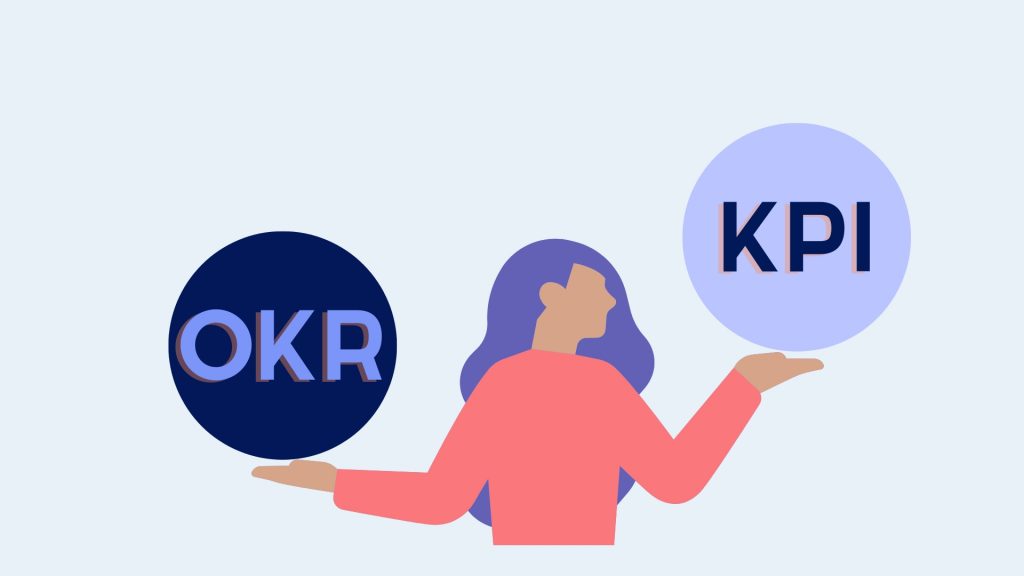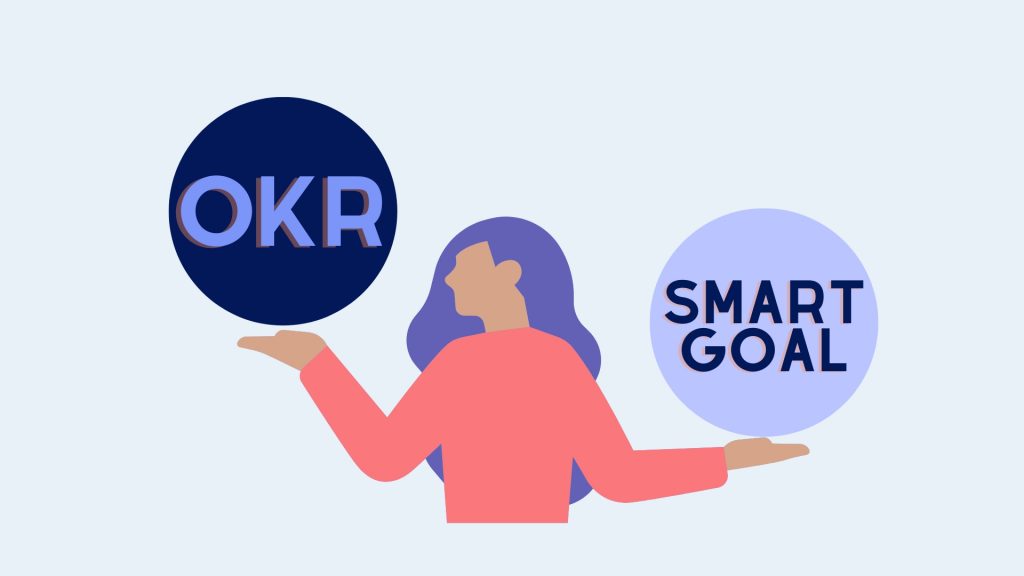Workplace culture has become a buzzword in recent years, and for good reason.
The data makes it clear — companies with strong cultures have lower turnover rates, higher productivity, and increased profitability. A positive work environment will lead to happier employees who are more engaged and motivated to do their best work.
But what exactly makes up a strong workplace culture? At its core, a strong culture is defined by employees who feel connected to the work they do and the organization they work for.
There’s many routes you can take to achieve this sense of connection. Some classic approaches include clear communication, strong leadership, and a sense of purpose. But as workplace culture evolves, new techniques and strategies are arising to enhance this culture. Nowadays, leadership teams are turning to goal setting to engage their employees and foster a sense of connection between role responsibilities and greater purpose.
Objectives and Key Results (OKRs), are a goal-setting framework touted by some of the biggest companies (notably in tech), including Google. OKRs are a simple and effective way to get an entire organization on the same page, and work towards achieving a common set of objectives.
Here, we’ll take a look at what OKRs are, how they compare to other goal-setting frameworks, the potential benefits OKRs could offer your company culture, and how to implement them.
What are OKRs and How Do They Compare to Other Goal-setting Methods?
As we mentioned above, OKRs are a framework for setting and tracking goals. But OKRs are specifically designed to focus efforts, and generate collective goal achievements so organizations can effectively advance to their most important objectives. There are two parts to the OKR structure: Objectives and Key Results.
OKRs explained
Objectives are specific and measurable goals that are set by an individual or team. When we say measurable, it has to be something that can be tracked, iterated and improved on — something not always easy to establish. These objectives are meant to be ambitious and should ladder up to the overall goals of the organization.
Key Results are the measurable outcomes that need to be achieved to accomplish your objectives. Like the objectives, key results should be specific, measurable, and achievable. Achievable being key here — ambition is welcome in the OKR framework, but shouldn’t prevent establishing realistic objectives and key results.
The fundamentals of OKRs might sound pretty basic, but they differ from other goal-setting methods in several ways.
OKRs vs. KPIs

Key Performance Indicators (KPIs), are metrics that track the performance of a business or a specific process. While KPIs are useful for monitoring progress, they don’t always help entire organizations set goals or define their strategy. Instead, KPIs tend to focus on very specific metrics and targets within a particular area (be it a team or an individual contributor), and can’t capture the full breadth of goals and strategic alignment required for your entire organization.
Contrast that with OKRs, which are designed to help organizations set clear and measurable goals that are aligned with their overall strategy. KPIs don’t have the “big picture” impact OKRs offer.
OKRs vs. SMART goals

SMART goals are another popular goal-setting framework. The acronym stands for Specific, Measurable, Achievable, Relevant, and Time-bound.
We’ve written about SMART goals before, and it’s clear they’re useful for setting specific and achievable goals, but don’t necessarily help organizations align their goals with their overall strategy (this is a recurring theme among other goal-setting frameworks). Similar to KPIs, SMART goals lack the comprehensive alignment and strategic focus of OKRs. SMART goals focus on individual or departmental objectives, lacking the cascading and alignment across teams and the whole organization.
Benefits of OKRs on Company Culture

If your organization decides to leverage OKR goal setting, you stand to realize a significant positive impact on your company culture. Let’s take a look at some examples of the benefits of using OKRs.
Increased engagement
When employees understand their role in achieving your organization’s objectives, they become more engaged and motivated to contribute. It snaps employees out of the “assembly line worker” mindset, where they’re only focused on the minutiae of their daily tasks, and provides a sense of the greater goal of the company, and how their work contributes to achieving that goal.
OKRs also provide a clear roadmap for employees to follow, which helps them stay focused on the most important tasks without distraction.
Increased alignment
OKRs help organizations align their goals and objectives across different departments and teams. When everyone is working towards a shared objective, there’s much less confusion and conflict, which leads to a more cohesive and productive work environment.
Another benefit of this approach is improved camaraderie across departments, something that also has a major impact on employee morale and the perception of your company culture.
Increased transparency
Having a clear view of the work you’re doing and the results you’re aiming for means you can make decisions that accurately advance towards your organization’s goals.
OKRs offer this transparency, and when everyone is aware of the organization’s priorities, it becomes easier to make decisions that are aligned with the overall strategy holistically, not simply at the individual level.
Increased accountability
OKRs create a sense of accountability among employees. When everyone is working towards a common set of objectives, there’s a greater sense of responsibility and ownership over their work.
This facilitates a culture of “self management” — employees will proactively work towards the most important goals without the need for managerial intervention. Less micromanagement boosts employee morale and frees up leadership’s valuable time.
Continuous improvement
One of the most unique parts of OKRs is that they’re specifically designed to be dynamic and flexible. This means that they can be updated and adjusted as your organization’s priorities change, which allows for continuous improvement and ensures that everyone is always working towards the objectives which offer the best outcome for your organization.
How to Implement OKRs to Transform Your Company Culture
Implementing OKRs can lead to significant improvements in company culture and performance, which is why so many major companies have adopted the framework. Follow these steps to introduce OKRs to your management strategy.
Define your organization’s objectives
The first step in implementing OKRs is to define your organization’s objectives. These objectives need to be clear, measurable, and aligned with a broad, holistic strategy and vision. Once you’ve defined your overarching objectives, you can begin to break them down into individual team or department goals. Sharing in this clear vision makes every team member feel the satisfaction of working towards a common goal — a huge boon to your culture.
Set team or department objectives
To realize this cultural growth, you also need to get tactical at a smaller scale. Goals at the team and individual level are approached the same way they are at higher levels, just with a more laser-focused approach, tailored to the team or person setting out to achieve them.
Like all parts of the OKR strategy, these objectives should be aligned with the organization’s overall objectives and should be specific, measurable, and achievable.
Define key results
For each team or department objective, define the key results that need to be achieved to accomplish the objective. Remember — specificity is incredibly important here. Any vaguery can lead to confusion and cause teams to work in the wrong direction, which can derail goals across the company. By facilitating focus, you’ll give your employees a better chance at achieving their goals, and the positive feelings that come with it.
Assign ownership
OKRs rely on defined owners for objectives. Assign ownership of each objective and key result to a specific individual or team, so that they can take clear responsibility for driving results.
This ensures that everyone knows who is responsible for achieving each objective and key result, and if pivots are required it can be dealt with at a granular level.
Review and adjust
As we mentioned above, OKRs aren’t set in stone — and that’s on purpose. This flexibility encourages regular reviews and adjustments as needed. Regular reviews ensure that your organization is staying on track and all teams are making progress towards its main objectives.
Aligning OKRs to Your Business Strategy
One of the keys to successfully implementing OKRs is to ensure that they are aligned with your business strategy. This comes down to a matter of prioritization — consider what the most important, time sensitive and impactful goals are for your company, and prioritize defining your OKRs around those objectives first.
When aligning your OKRs to your business strategy, consider the following:
Define your long-term vision
Your long-term vision should be the guiding force behind your OKRs, the North Star that your organization is working towards. By keeping your vision long term, rather than solely focusing on quarterly goals, you’ll set your organization up for long-term success.
Identify your most important priorities
After defining your long-term vision, identify the most important priorities that will help you achieve that vision. These priorities should be the core focus of your OKRs.
Break down your objectives
Break down your main objectives into smaller, more specific goals that are aligned with your most important priorities. All smaller goals should ladder up directly to supporting the greater strategy.
Define your key results
For each objective, define the key results that need to be achieved to accomplish the objective. Again — as we’ve said before, these key results should be specific, measurable, and achievable. That’s the crux of OKR effectiveness.
Assign ownership
Assign ownership of each objective and key result to a specific individual or team. This ensures that everyone knows who is responsible for achieving each objective and key result.
FAQ: How Many OKRs Should I Set?
One of the most common questions about OKRs is how many objectives should be set. While there’s no one-size-fits-all answer, it’s generally recommended that organizations set no more than 5-7 objectives per quarter. This ensures that your organization is focused on its most important priorities and that employees aren’t being asked to go in too many directions at once.
5 Team-Specific OKR Examples
Different departments will approach OKRs in different ways that best support their unique goals and responsibilities.
From Sales and Marketing to Operations, Customer Success, and IT, we’ll take a look at how these teams can define Key Results to drive growth, engagement, and efficiency. This way, you’ll get a clear picture of how OKRs can be tailored to suit different teams and contribute to overall success.
Sales
Objective: Increase revenue by 20% in Q2.
Key Results:
- Sign 10 new clients in Q2.
- Increase average deal size by 15% in Q2.
- Increase conversion rate by 10% in Q2.
Marketing
Objective: Increase website traffic by 30% in Q2.
Key Results:
- Publish 10 new blog posts in Q2.
- Increase social media engagement by 20% in Q2.
- Run 3 successful email marketing campaigns in Q2.
Operations
Objective: Improve product quality in Q2.
Key Results:
- Reduce product defects by 15% in Q2.
- Implement a new quality control process by the end of Q2.
- Conduct customer satisfaction surveys and achieve a score of at least 9 out of 10 in Q2.
Customer Success
Objective: Increase customer retention by 10% in Q2.
Key Results:
- Conduct customer satisfaction surveys and achieve a score of at least 8 out of 10 in Q2.
- Implement a new customer feedback system by the end of Q2.
- Reduce customer churn rate by 5% in Q2.
IT
Objective: Improve system uptime in Q2.
Key Results:
- Implement a new monitoring system by the end of Q2.
- Reduce mean time to resolution for system issues by 50% in Q2.
- Achieve system uptime of at least 99.9% in Q2.
Unlock a Culture of Excellence With OKRs
In a world where workplace culture can make or break an organization’s success, OKRs represent a powerful tool to revolutionize your company’s trajectory. By embracing this dynamic goal-setting framework and aligning it with your business strategy, you open the door to a culture of excellence, collaboration, and continuous growth.
Omni allows managers and People leaders to leverage the power of automation to digitize the people management process. Set and track employee goals, performance review cycles, and access real-time actionable insights on employee performance in one, easy-to-use platform.
Book a demo with our team today to learn more about how Omni can help you transform your company culture and help your teams achieve their performance goals.


